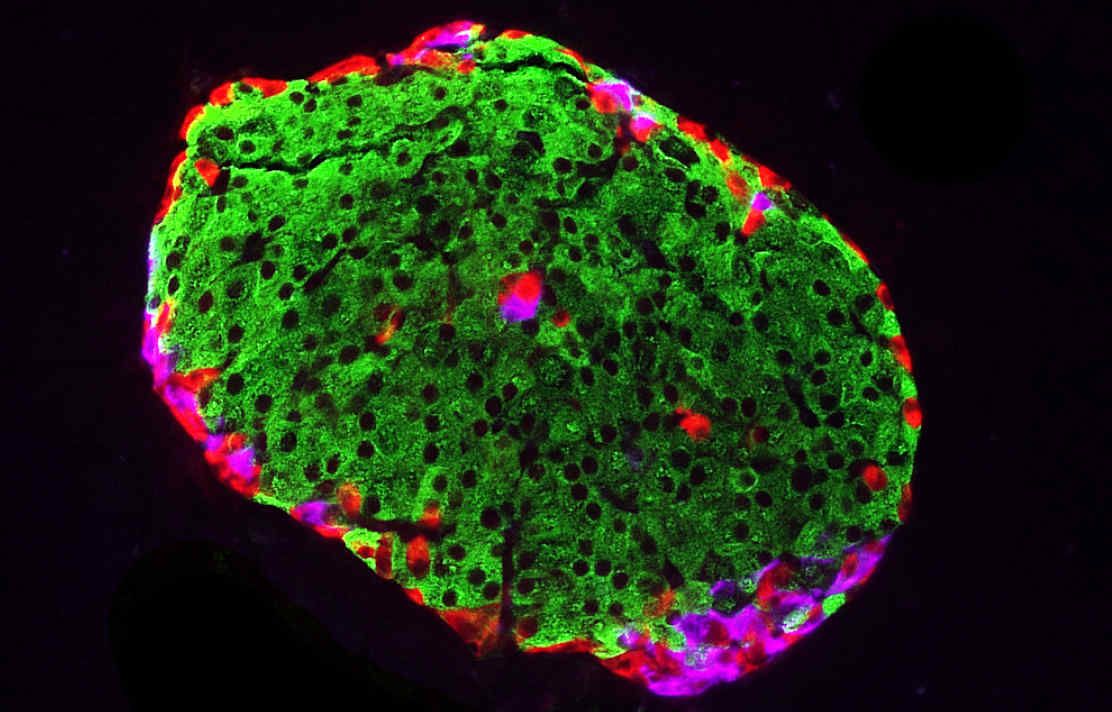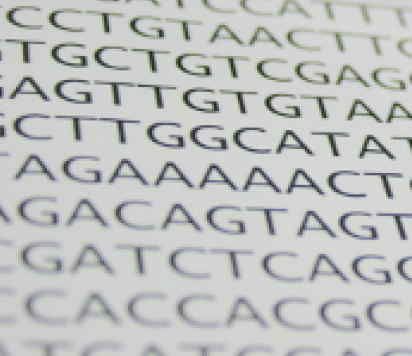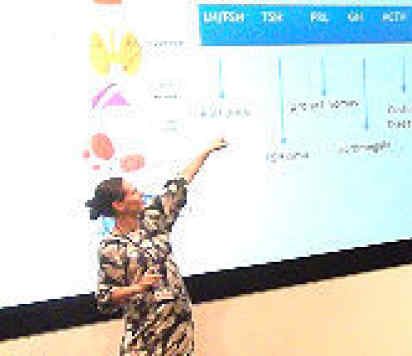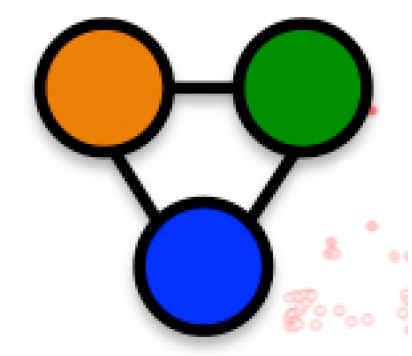Results
- Showing results for:
- Reset all filters
Search results
-
Journal articleRodriguez-Segui S, Akerman I, Ferrer J, 2012,
GATA believe it: new essential regulators of pancreas development
, JOURNAL OF CLINICAL INVESTIGATION, Vol: 122, Pages: 3469-3471, ISSN: 0021-9738- Author Web Link
- Cite
- Citations: 21
-
Journal articleMoran I, Akerman I, van de Bunt M, et al., 2012,
Human β Cell Transcriptome Analysis Uncovers IncRNAs That Are Tissue-Specific, Dynamically Regulated, and Abnormally Expressed in Type 2 Diabetes
, CELL METABOLISM, Vol: 16, Pages: 435-448, ISSN: 1550-4131- Author Web Link
- Cite
- Citations: 354
-
Journal articleSwales N, Martens GA, Bonné S, et al., 2012,
Plasticity of adult human pancreatic duct cells by neurogenin3-mediated reprogramming.
, PLOS One, Vol: 7, Pages: e37055-e37055, ISSN: 1932-6203AIMS/HYPOTHESIS: Duct cells isolated from adult human pancreas can be reprogrammed to express islet beta cell genes by adenoviral transduction of the developmental transcription factor neurogenin3 (Ngn3). In this study we aimed to fully characterize the extent of this reprogramming and intended to improve it. METHODS: The extent of the Ngn3-mediated duct-to-endocrine cell reprogramming was measured employing genome wide mRNA profiling. By modulation of the Delta-Notch signaling or addition of pancreatic endocrine transcription factors Myt1, MafA and Pdx1 we intended to improve the reprogramming. RESULTS: Ngn3 stimulates duct cells to express a focused set of genes that are characteristic for islet endocrine cells and/or neural tissues. This neuro-endocrine shift however, is incomplete with less than 10% of full duct-to-endocrine reprogramming achieved. Transduction of exogenous Ngn3 activates endogenous Ngn3 suggesting auto-activation of this gene. Furthermore, pancreatic endocrine reprogramming of human duct cells can be moderately enhanced by inhibition of Delta-Notch signaling as well as by co-expressing the transcription factor Myt1, but not MafA and Pdx1. CONCLUSIONS/INTERPRETATION: The results provide further insight into the plasticity of adult human duct cells and suggest measurable routes to enhance Ngn3-mediated in vitro reprogramming protocols for regenerative beta cell therapy in diabetes.
-
Journal articleAllen HL, Flanagan SE, Shaw-Smith C, et al., 2012,
GATA6 haploinsufficiency causes pancreatic agenesis in humans
, NATURE GENETICS, Vol: 44, Pages: 20-22, ISSN: 1061-4036- Author Web Link
- Cite
- Citations: 183
-
Journal articleKirkpatrick CL, Wiederkehr A, Baquie M, et al., 2011,
Hepatic Nuclear Factor 1α (HNF1α) Dysfunction Down-regulates X-box-binding Protein 1 (XBP1) and Sensitizes β-Cells to Endoplasmic Reticulum Stress
, JOURNAL OF BIOLOGICAL CHEMISTRY, Vol: 286, Pages: 32300-32312- Author Web Link
- Cite
- Citations: 21
-
Journal articleNammo T, Rodriguez-Segui SA, Ferrer J, 2011,
Mapping Open Chromatin with Formaldehyde-Assisted Isolation of Regulatory Elements
, EPIGENETICS PROTOCOLS, SECOND EDITION, Vol: 791, Pages: 287-296, ISSN: 1064-3745- Author Web Link
- Cite
- Citations: 10
-
Journal articleGjesing AP, Larsen LH, Torekov SS, et al., 2010,
Family and population-based studies of variation within the Ghrelin receptor locus in relation to measures of obesity
, PLoS ONE, Vol: 5, ISSN: 1932-6203BackgroundThe growth hormone secretagogue receptor (GHSR) is mediating hunger sensation when stimulated by its natural ligand ghrelin. In the present study, we tested the hypothesis that common and rare variation in the GHSR locus are related to increased prevalence of obesity and overweight among Whites.Methodology/Principal FindingsIn a population-based study sample of 15,854 unrelated, middle-aged Danes, seven variants were genotyped to capture common variation in an 11 kbp region including GHSR. These were investigated for their individual and haplotypic association with obesity. None of these analyses revealed consistent association with measures of obesity. A -151C/T promoter mutation in the GHSR was found in two unrelated obese patients. One family presented with complete co-segregation, but the other with incomplete co-segregation. The mutation resulted in an increased transcriptional activity (p<0.02) and introduction of a specific binding for Sp-1-like nuclear extracts relative to the wild type. The -151C/T mutation was genotyped in the 15,854 Danes with a minor allele frequency of 0.01%. No association with obesity in carriers (mean BMI: 27±4 kg/m2) versus non-carriers (mean BMI: 28±5 kg/m2) (p>0.05) could be shown.Conclusions/SignificanceIn a population-based study sample of 15,854 Danes no association between GHSR genotypes and measures of obesity and overweight was found. Also, analyses of GHSR haplotypes lack consistent associations with obesity related traits. A rare functional GHSR promoter mutation variant was identified, yet there was no consistent relationship with obesity in neither family- nor population-based studies.
-
Journal articleGaulton KJ, Nammo T, Pasquali L, et al., 2010,
A map of open chromatin in human pancreatic islets
, Nature Genetics, Vol: 42, Pages: 255-U41, ISSN: 1061-4036Tissue-specific transcriptional regulation is central to human disease1. To identify regulatory DNA active in human pancreatic islets, we profiled chromatin by formaldehyde-assisted isolation of regulatory elements2,3,4 coupled with high-throughput sequencing (FAIRE-seq). We identified ∼80,000 open chromatin sites. Comparison of FAIRE-seq data from islets to that from five non-islet cell lines revealed ∼3,300 physically linked clusters of islet-selective open chromatin sites, which typically encompassed single genes that have islet-specific expression. We mapped sequence variants to open chromatin sites and found that rs7903146, a TCF7L2 intronic variant strongly associated with type 2 diabetes5, is located in islet-selective open chromatin. We found that human islet samples heterozygous for rs7903146 showed allelic imbalance in islet FAIRE signals and that the variant alters enhancer activity, indicating that genetic variation at this locus acts in cis with local chromatin and regulatory changes. These findings illuminate the tissue-specific organization of cis-regulatory elements and show that FAIRE-seq can guide the identification of regulatory variants underlying disease susceptibility.
-
Journal articleGarin I, Edghill EL, Akerman I, et al., 2010,
Recessive mutations in the <i>INS</i> gene result in neonatal diabetes through reduced insulin biosynthesis
, PROCEEDINGS OF THE NATIONAL ACADEMY OF SCIENCES OF THE UNITED STATES OF AMERICA, Vol: 107, Pages: 3105-3110, ISSN: 0027-8424- Author Web Link
- Cite
- Citations: 150
-
Journal articleSolar M, Cardalda C, Houbracken I, et al., 2009,
Pancreatic Exocrine Duct Cells Give Rise to Insulin-Producing β Cells during Embryogenesis but Not after Birth
, DEVELOPMENTAL CELL, Vol: 17, Pages: 849-860, ISSN: 1534-5807- Author Web Link
- Cite
- Citations: 363
This data is extracted from the Web of Science and reproduced under a licence from Thomson Reuters. You may not copy or re-distribute this data in whole or in part without the written consent of the Science business of Thomson Reuters.

Links
General enquiries
Beta Cell Genome Regulation Lab
ICTEM Building, 5th floor
Hammersmith Campus
Du Cane Road
London
W12 0NN
Enquiries
d.cieslak-jones@imperial.ac.uk
+44 (0)20 7594 2739


